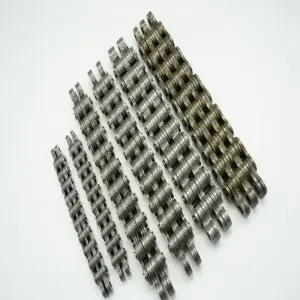In recent years, there has been growing recognition of the importance of gender equality and women’s empowerment in agriculture. Integrating gender considerations into agricultural value chains is critical not only for social justice, but also for maximizing the potential of these value chains. This guide aims to provide valuable insights and strategies to effectively integrate gender in agricultural value chains, promote inclusiveness and promote sustainable development.
Understand the concept of the agricultural value chain:
To better understand the integration of gender into agricultural value chains, we first define this concept. The agricultural value chain covers all activities involved in the production, processing and distribution of agricultural products from producers to consumers. They include input suppliers, farmers, processors, traders, retailers and consumers. Integrating gender means recognizing and addressing the different roles, needs and constraints that women and men face across the value chain.
Why is gender integration important?
Achieving gender equality in agricultural value chains can yield significant benefits. First, it helps improve agricultural productivity and food security. Women play a vital role in agricultural production, accounting for approximately 43 percent of the global agricultural workforce. Recognizing and empowering them increases productivity and improves access to resources and markets. Second, gender integration contributes to poverty reduction and economic growth. To enable women to actively participate in the economic development of their communities by promoting equal opportunities for women. Finally, gender equality contributes to social cohesion and sustainable development by reducing inequality and empowering marginalized groups.
Strategies for integrating gender into agricultural value chains:
1. Conduct a gender analysis: Start by conducting a comprehensive gender analysis of the value chain to identify existing gender-based constraints and opportunities. The analysis should consider the roles, responsibilities and decision-making rights of women and men at all stages of the value chain.
2. Develop gender-sensitive policies: Develop and implement gender-sensitive policies and frameworks that address the specific needs and constraints faced by women in the value chain. These policies could include gender quotas, access to funding and land, and capacity-building training programmes.
3. Provide gender-specific training: Provide gender-responsive training programs to build the capacities of women and men at all stages of the agricultural value chain. These programs should address gender bias, provide technical skills, and promote entrepreneurship.
4. Increase women’s access to resources: Increase women’s access to resources such as credit, land and markets. This can be achieved through targeted interventions such as microfinance initiatives targeting women, land reforms to secure women’s land rights, and building inclusive market networks.
5. Strengthening gender-inclusive governance: Ensuring women’s representation and meaningful participation in decision-making processes related to agricultural value chains. Encouraging the formation of women’s cooperatives and networks can facilitate collective decision-making and amplify their voices.
Integrating gender into agricultural value chains is critical to achieving sustainable and inclusive development. By recognizing the roles, needs and constraints that women and men face across value chains, we can harness the potential of agriculture to address food security, poverty reduction and gender equality. By following the strategies outlined in this guide, stakeholders in the agricultural sector can promote positive change and contribute to a more equitable and prosperous future.
Post time: Aug-16-2023

